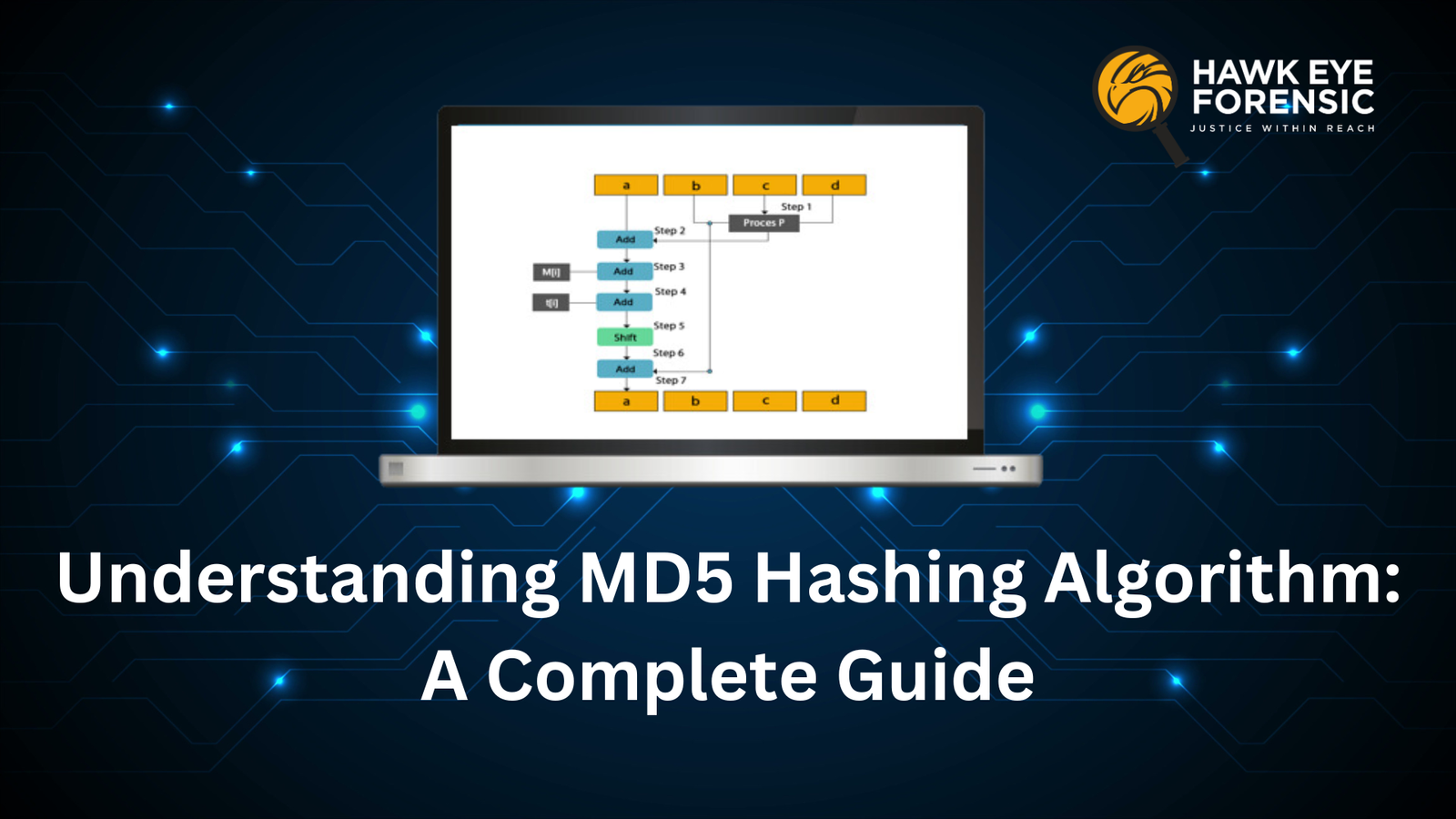
Most Common Mistakes to Avoid When Attempting Mobile Data Recovery
Losing mobile data can be a terrifying experience in the digital era since cell phones play a big role in every aspect of our lives. It is more important than ...


Digital Forensic Glossary Anjali Singhal todayDecember 27, 2023

In today’s digital world, the need for secure data transmission and storage is paramount. One of the fundamental tools in ensuring data integrity and security is cryptographic hash functions. Among these, the MD5 (Message Digest Algorithm 5) hashing algorithm has been widely used for various purposes. This comprehensive guide aims to provide an in-depth understanding of MD5, its functionalities, applications, vulnerabilities, and alternatives.
MD5 is a widely used cryptographic hash function that produces a 128-bit (16-byte) hash value, typically expressed as a 32-character hexadecimal number. Developed by Ronald Rivest in 1991, MD5 was designed to generate a unique fixed-size output (the hash) for any given input data, regardless of its size.
MD5 operates by taking an input (referred to as the message) of any length and producing a fixed-size hash value. It processes the input in a series of steps involving bit manipulation, logical operations, and modular addition.
The MD5 algorithm consists of the following steps:
Given the security issues with MD5, cryptographic experts recommend using more secure hash functions like SHA-256 (Secure Hash Algorithm 256-bit). SHA-256, belonging to the SHA-2 family, offers stronger security and resistance against collision attacks.
While MD5 has served as a foundational cryptographic tool for decades, its vulnerabilities make it unsuitable for many security-critical applications today. Understanding its workings, limitations, and vulnerabilities is crucial for making informed decisions about its use. As technology evolves, it’s essential to adopt more robust and secure hashing algorithms to ensure data integrity and confidentiality in an increasingly interconnected digital landscape.
Written by: Anjali Singhal
Tagged as: Digital signature concepts, Application of MD5 in software, Data verification methods, Password security and MD5, MD5 hashing, MD5 vs other hash algorithms, MD5 best practices, Cryptographic algorithms, Secure data hashing, Understanding MD5 output, Data integrity techniques, Hexadecimal representation, MD5 for file integrity, Hash functions explained, MD5 checksums, MD5 and blockchain technology, Cybersecurity basics, Collision-resistant hashing, MD5 for data protection, Message Digest 5 overview, Information security practices, Comprehensive MD5 guide, MD5 vulnerabilities and risks, Non-repudiation in cryptography, MD5 in digital forensics, Cryptographic hash functions, Fingerprint algorithms, Exploring MD5 hash functions, Hash collision prevention, MD5 hash value generation.

Mobile Forensic Anjali Singhal
Losing mobile data can be a terrifying experience in the digital era since cell phones play a big role in every aspect of our lives. It is more important than ...
Copyright 2023 all rights reserved by Hawk Eye Forensic.
Post comments (0)